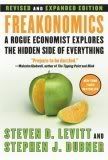Lenders Properly Assessing Risk?
Prosper provides a reasonable amount of information on the borrowers to allow lenders to estimate risk. I've been quite curious, however, on how well the lenders are interpreting this information and generating risk-adjusted bids on loans. To that end, it's time for some more data crunching.
My handy-dandy tools have calculated the distress rate (loans in all the bad status categories from Late to Defaulted) for various interest rate bands.
| Start | End | Distress Rate | Spread |
| 0.00% | 5.00% | 12.82% | -10.32% |
| 5.00% | 7.50% | 1.92% | 4.33% |
| 7.50% | 10.00% | 1.44% | 7.31% |
| 10.00% | 12.50% | 2.89% | 8.36% |
| 12.50% | 15.00% | 4.01% | 9.74% |
| 15.00% | 17.50% | 5.72% | 10.53% |
| 17.50% | 20.00% | 5.91% | 12.84% |
| 20.00% | 22.50% | 9.99% | 11.26% |
| 22.50% | 25.00% | 14.29% | 9.46% |
| 25.00% | 27.50% | 15.06% | 11.19% |
| 27.50% | 30.00% | 21.54% | 7.21% |
| 30.00% | 40.00% | 62.07% | -27.07% |
Looking at the table broadly, risk is priced reasonably well except for loans below 7.5% and above 30%. The table's middle section has a slowly increasing distress rate that implies that, roughly speaking, lenders are placing risk reasonably. I have to assume that the loans below 7.5% are sweet-heart deals brokered between people who know each other, because it doesn't make financial sense. The CD rates (risk free) have been in the 4.5% - 5% range for a while, and a collateralized home loan has been around 6%. Well, for whatever reason it was a bad risk. Equally, anyone who wants a loan at over 30% appears to be a bad risk as the interest rates are obviously not covering the risk.
My rule of thumb has been that a 1% increase in distress rate should be compensated for by a 1% increase in the interest rate. This was captured in the Spread column. An increasing spread corresponds to improving lender return. Looking at the table, lenders are getting a good deal. Many ranges approach 2% increases in interest rates for a 1% increase in risk. The lender sweet spot is coming in for loans in the 20% area.






